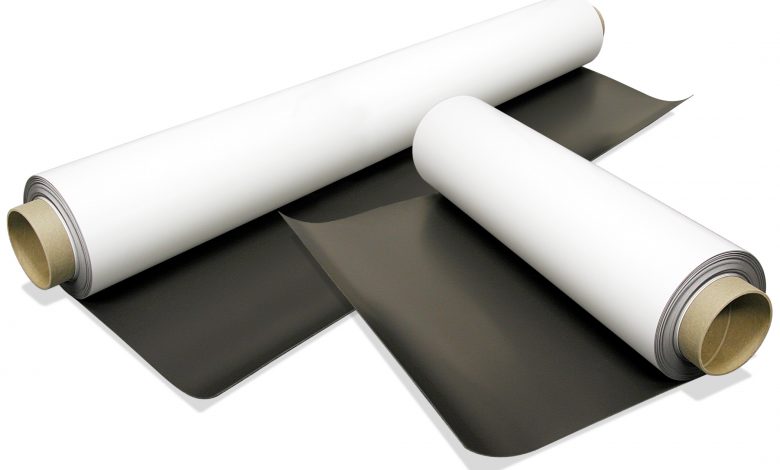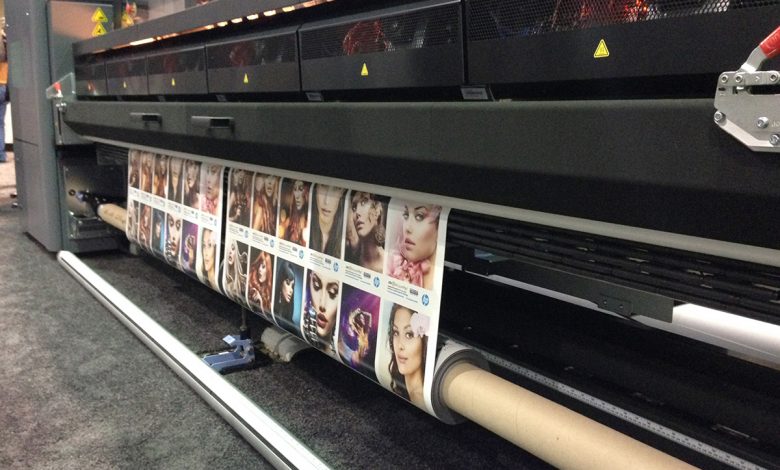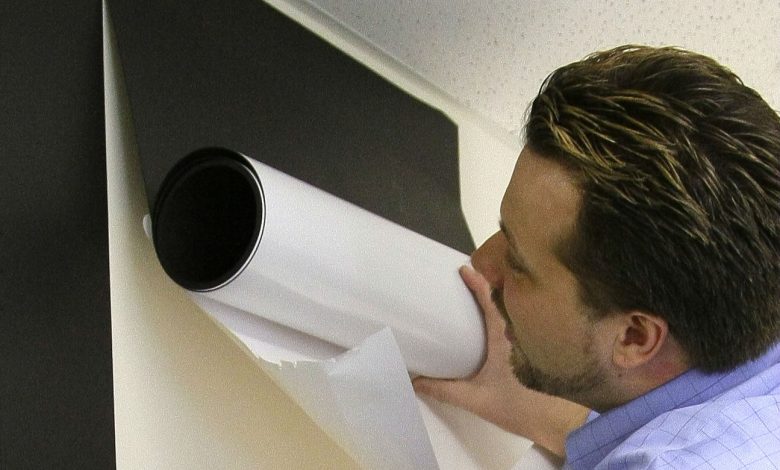The 411 on Direct Printing to Magnets
Take advantage of the growth of printing onto magnets
For as long as we’ve had writing utensils, children have made the world their canvas. Walls, tables, floors, furniture-you name it, a kid has decorated it. Scribbling away in all colors, patterns, and shapes, any “media” is available to these youthful artists.
Now, think about digital printers today. They behave similarly to children in the sense that they can apply graphics to almost anything—paper, vinyl, rigid substrates, and more. Magnetic material is no exception, as printers have successfully tackled these projects for years. The difference is knowing what steps to take when printing to magnets. Magnetic sheet size, printer/ink type, lamination, handling, and storage requirements are all part of the process.
“Direct printing to magnets is easier today than in the past,” says a sales manager for Rochester Magnet Co. “Most of today’s advanced printers can print directly onto magnets. A wide variety of inks, specific to indoor or outdoor applications, can be used.”
For sign makers, this is positive news as it allows them to design and create magnetic signage more creatively. And while they can offer many more solutions than what they could in the past, there are still many factors to consider. First is how improvements to digital printing technologies have helped the production of magnetic signs.
Printing improvements
“The development of new printable substrates and new print surfaces applied to magnets has enhanced and improved printability,” says Alice Martin, director of marketing, Adams Magnetic Products.
Magnet manufacturers have constantly been expanding their product lines to allow for greater integration of their offerings on the sign market. As the magnetic sheet itself transforms, there is simply more a sign maker can do with it.
“With the development of high-energy magnetic sheeting, the magnet can be thinner and lighter weight,” explains Mike Gertz, marketing manager, Master Magnetics Inc. “A 15-mil, high-energy magnet has the same strength as 30-mil regular-strength magnetic sheeting—the required strength for magnetic vehicle signs. This allows for printers with a print head height limitation of less than 30 mil to print direct-to-magnet for vehicle signs.”
Dealing with a thinner material that doesn’t compromise performance lends itself to more options in equipment use and easier-to-handle media for sign makers. In addition, the “printable surface has evolved with print technology,” shares Clay Reierson, project manager, Xcel Product Inc. “Now offering latex, UV, solvent, and eco-solvent options.”
With these additional options come improvements to the quality; when combined with an overall faster output, direct printing to magnets is positioned as a much more advanced method than in past years.
“The main printable topcoats—vinyl, coated and paper—have continuously improved for higher resolution, four-color images in terms of clarity and color saturation,” says Gertz. “This one-step process of printing directly to the magnet is a faster, more efficient and profitable process than the traditional two-step process of printing on another substrate, such as vinyl, and then laminating it to the magnet.”
With the advancements that are being made, Reierson believes that the “market demand for magnets in multiple applications has forced many printer manufacturers to now feature magnet profiles in their standard offering.”
Elements of printing
Looking around to take notice of magnet projects, many will notice that vehicle signage is a popular application. Other uses include POP and retail signs, menu boards, calendars, labels, and even business cards. All of these projects come together through the right design, printing, and handling processes. Let’s take a look at each component individually.
Printers and ink
“The type of printer a shop plans on using will determine if they can print on magnetized material,” explains Rochester Magnet Co. “Some printers cannot run magnetized material and will need an unmagnetized magnet. The magnetization process would occur post-print using a magnetizer. There are several options available for magnetizers, from handheld to desktop versions.”
As far as the actual size of the printer, that isn’t a factor. A printable magnet is available for desktop printers up to wide-format presses.
As for the ink being used, Martin states that the ink choice will determine the right substrate.
“The type of substrate required will depend on the ink/system being utilized—UV, solvent/eco-solvent, latex, water-based, etc.,” she says. “The printer must know his ink type and convey this information to their magnet supplier.”
The surface of magnetic materials can be different whereas, “vinyl and coated (media) are compatible with solvent, eco-solvent, UV and latex inks,” says Gertz. “Aqueous inks need to print on a paper topcoat.”
Magnetic material
Thickness is a big consideration when choosing media for a magnetic sign. What size can the printer handle? Where is the sign being placed? What is the desired durability?
“Magnet thickness can vary from 8 mils to 60 mils,” explains Rochester Magnet Co’s spokesperson. “Shops should keep in mind that the pull strength of a printable magnet is related to how thick it is. Shops should discuss with their supplier to determine the appropriate material for their application.”
Since digital printers are created differently, and sometimes for specific projects, some magnetic media might be too thick to print directly to it. Gertz warns, “Be aware of the printer’s print head height limitations.”
Martin adds, “The capabilities of the specific printer being used are critical, and materials are typically available in .015, .020; .030, .045, .060 thicknesses.”
Design and planning
Industry advancements have made designing and project planning a much more important step.
“Magnetic sheeting is being offered in wider rolls, which allows for greater yield on each roll, making each printing project more efficient and profitable,” says Gertz. “Start with a good quality, high-resolution image appropriate for the desired output size.”
Sign makers are free to use colors liberally, incorporate larger logos and graphics, and attention-getting messages.
Speaking to the design aspects, Martin says, “Indoor and outdoor projects are universal depending on what you are trying to achieve.”
Print care
Post-printing, there are steps to take that will greatly improve a project. Number one, physical handling of the print properly is essential.
“Handling magnets flat is always best, but can be difficult for larger sheets,” says Reierson. “There can be roll set memory on rolled magnet and could adversely affect its performance, especially when cold. It’s important to understand how the magnet works as each situation could be a little different, depending on the size of the graphic, gauge of the magnet, and environmental factors.”
Martin says if the sheets must be rolled, “always roll with the print side out. Obviously, make sure the inks have properly dried.”
Storage is another topic to address for both printed and unprinted media. Sign makers want to avoid damage to media by storing it improperly.
“Keep unprinted magnetic material in its original shipping container (cardboard tube or carton),” suggests Gertz. “For storage of flexible magnetic sheeting, keep in a clean, dry area. Store on end to avoid any flat spots. When stacking, do not stack magnetic side to magnetic side due to the potential of wrinkling caused by improper pole alignment. Do not lay product on the ground because the magnet will attract fine iron particles that are in dirt and asphalt.”
Sign makers familiar with digital printing realize that laminating a print will typically bring more durability and longer life to the project. With magnets, it’s not always a necessary step.
“While laminating after printing isn’t necessary, it comes down to the preference of the shop and how they would like to finish the product,” says Rochester Magnet Co. “Adding a protective layer can increase the product’s weatherability.”
For instance, if the sign will be used outdoors, it might be a good idea to add a laminate. Additionally, the ink type could factor into a decision to laminate.
“Latex, UV, solvent, and eco-solvent inks do not require an extra protective coating, but a clear protective laminate can be used to extend the durability when used outdoors,” adds Gertz. “Paper topcoats printed with aqueous ink definitely require a protective laminate if used outdoors or if the printed piece will be handled often.”
However, in some cases laminating can cause some unwanted results.
“Over-laminating can cause edge peel and erosion over time,” says Reierson. “A quality magnet is designed to be printed directly and not over-laminated.”
Industry advice
Finally, manufacturers are a tremendous resource for sign shops. According to Rochester Magnet Co’s spokesperson, “The best course of action a shop can take is to speak with their supplier. Rochester Magnet knows the right questions to ask to determine which product will be compatible with a shop’s printer and ink.”
Magnet providers not only aim to provide top-quality products for their customers but also to offer tips on how to best use them.
“Quality domestic magnets have superior layflat and specific print surfaces, versus magnets manufactured offshore,” states Reierson. “For printers which have metal feed and exit platens, you can search YouTube for tips to create a simple ‘air-gap’ for smooth feeding and excellent printability. Also, make sure the printable surface is designed specifically for your ink type.”
The printing process is not vacant of challenges from time to time. Gertz encourages shops to “be sure that it (magnet) feeds through the printer completely flat. Since it’s rubber-based, magnetic sheeting can sometimes retain a slight curve of the roll that it’s on. Occasionally, it might need time to be laid out flat to return to its original shape, which will ensure that it feeds through the printer smoothly.”
Like many problem-solving techniques, sign makers are encouraged to test their materials and equipment as they work toward a completed project.
Rochester Magnet Co.’s best tip is to test material before buying it. “Suppliers are happy to discuss with shops their project requirements and printer’s specifications. From that conversation, shops can order the appropriate samples to test and determine the best fit for them.”






